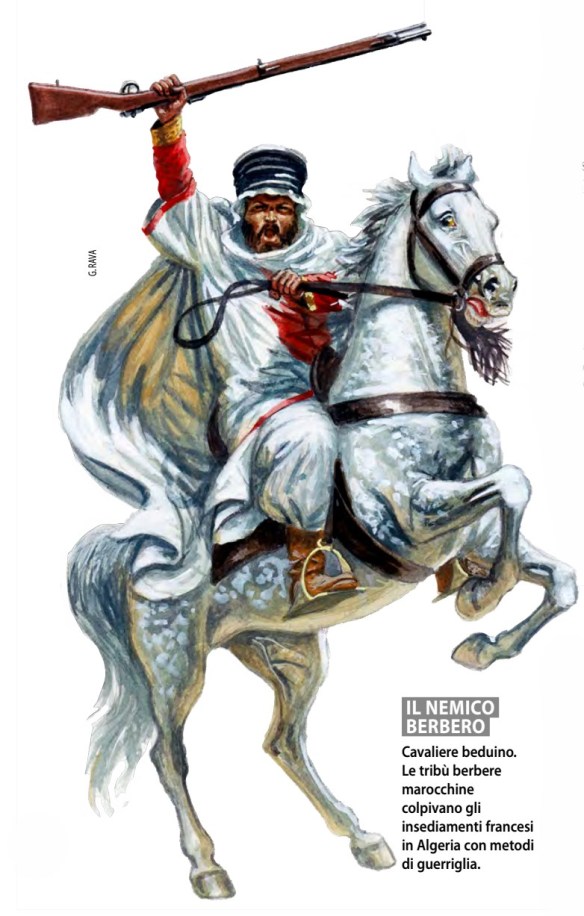The Dangers to a marching column are illustrated by the French defeat at El Moungar, in Morocco, on 2nd September 1903. A convoy of 3,000 camels carrying supplies for the fortified post at Taghit was divided into three echelons, in an attempt to minimise the risk if they were attacked. Captain Vauchez led the second echelon of 600 camels escorted by his mounted company of the 2nd Legion Etrangere. It left El Morra at 2am and reached the convoy halt of El Moungar at 9.30. As the Legionnaires began breakfast they were attacked from a line of dunes by some 5,000 Berbers and Shaamba Arabs. The camels and mounted company’s mules stampeded, splitting the column into three isolated groups of men. Vauchez was mortally wounded; Lt Selchauhansen formed an improvised square. Rifle fire was picking off his soldiers, so he led them in a charge to clear the dunes, but fell with half of his twenty men. Badly wounded, he directed the fire as a sergeant rallied the square to beat off another attack. For eight hours the remnant of the company held out; at 5.30 the third echelon was sighted and the Moroccans withdrew with their booty. Commanded by QM-Sgt Tisserand, the surrounded force endured continual firing and attacks that came to hand-to-hand, and by the time Capt de Susbielle reached them late that afternoon only 30 men led by Corporal Dietz were unwounded. Of 113 legionnaires, 34 were killed and 47 wounded: both the officers died the following day.
A two-company fort like Taghit the medical officer had only a small sickroom, and quite inadequate supplies to treat a large influx of wounded. When the 49 casualties from El Moungar arrived there in the early hours of 4 September 1903, the resident Dr Boulin was himself suffering from an eye infection. He, Drs de Lignerolles and Mazellier from the relief columns, and the fort’s two company orderlies did what they could, soon helped by the famous missionary Father de Foucauld, who rode over from Beni Abbes. The Danish Lt. Selchauhansen died on the first day; most of the other wounded had to be laid out on piles of dried grass on the hard floors of various storerooms. Five more orderlies with medical supplies arrived from Ain Sefra soon afterwards, but, given the standard of care that was possible, it was still extraordinary that only one more of the ten most serious cases died of his wounds.
The Shaamba got away with the enormous booty of 90-plus loaded camels, 25 Lebel rifles and 5,000 cartridges. The subsequent enquiry placed the blame, justly enough, on Capt. Vauchez’s tactical failings; he was an officer with a history of underestimating the tribesmen. Quartermaster-Sergeant Tisserand was given a battlefield commission, Sgt. Charlier was admitted to the Legion of Honour, and eight other survivors were awarded the Military Medal.
This virtual wiping out of a 100-strong Legion unit caused uproar in Paris, and in October 1903, at the urging of Governor-General Jonnart, command of Ain Sefra Subdivision passed to the newly promoted BrigGen Lyautey.
